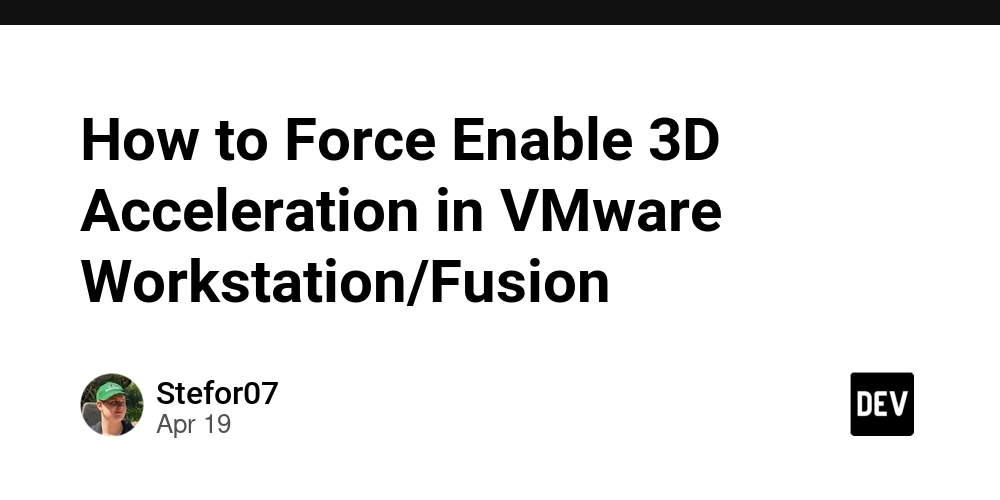Platform Engineering: The Next Evolution in DevOps
Introduction The DevOps landscape is continuously evolving, with new methodologies and tools emerging to enhance automation, scalability, and developer productivity. In 2025 and beyond, one of the most significant trends shaping the industry is Platform Engineering. While DevOps focuses on bridging the gap between development and operations, platform engineering takes it a step further by providing self-service internal developer platforms (IDPs) to streamline workflows and reduce cognitive load on developers. What is The Future of DevOps: What’s Next in 2025 & Beyond? What is Platform Engineering? Platform Engineering is the practice of designing and maintaining internal platforms that provide reusable and standardized tools, environments, and workflows for developers. These platforms help organizations achieve faster deployments, improved security, and better resource utilization by offering self-service capabilities. Why is it Important for DevOps? As DevOps teams scale, managing infrastructure, CI/CD pipelines, and cloud environments becomes more complex. Platform engineering introduces an abstraction layer, reducing complexity and making it easier for developers to focus on building applications rather than managing infrastructure. How it Works Architecture & Components of Platform Engineering A platform engineering stack typically includes: Self-Service Portals – Interfaces where developers can provision infrastructure, manage deployments, and monitor applications without relying on operations teams. Infrastructure as Code (IaC) – Automates the provisioning of infrastructure using tools like Terraform and Pulumi. Kubernetes & Container Orchestration – Ensures seamless application deployment and scaling. CI/CD Pipelines – Pre-configured and automated build, test, and deployment workflows. Observability & Monitoring – Integrated dashboards and alerts using tools like Prometheus, Grafana, and OpenTelemetry. Real-World Example Consider an enterprise managing multiple microservices. Instead of having each development team configure their own Kubernetes clusters and CI/CD pipelines, a central platform team provides a standardized Kubernetes environment with built-in security policies, pre-configured logging, and self-service deployment options. This enables faster software delivery while ensuring compliance. Key Features & Benefits Features: Standardized Developer Workflows – Predefined templates and automation tools simplify software development. Self-Service Capabilities – Developers can provision environments without waiting for DevOps teams. Security & Compliance by Default – Enforces security best practices automatically. Automated Infrastructure Management – Reduces manual errors and enhances scalability. Integrated Monitoring & Logging – Improves system observability. Benefits: Faster Deployment Cycles – Reduces bottlenecks and accelerates time-to-market. Reduced Operational Overhead – Frees up DevOps teams from repetitive tasks. Improved Developer Experience – Allows developers to focus on coding rather than infrastructure management. Better Scalability – Ensures a consistent environment across teams and projects. Use Cases & Industry Adoption Who is Using Platform Engineering? Netflix – Uses an internal developer platform to manage cloud-native applications efficiently. Spotify – Implemented Backstage, an open-source developer portal for managing microservices. Google – Provides internal platforms for teams to deploy applications across Kubernetes clusters. Use Cases: Enterprises with Multiple Dev Teams – Helps large organizations maintain uniform environments. Cloud-Native Applications – Simplifies Kubernetes-based application deployment. Startups Scaling Rapidly – Provides a foundation for growth without infrastructure headaches. Comparison with Alternatives Feature DevOps Traditional Approach Platform Engineering Developer Autonomy Limited, ops-dependent High, self-service Infrastructure Manually provisioned Automated IaC Security & Compliance Ad hoc Built-in policies Complexity High due to fragmented tools Reduced via standardization Step-by-Step Implementation Step 1: Define Platform Requirements Identify pain points in current DevOps workflows. Define self-service capabilities for developers. Step 2: Set Up Infrastructure as Code (IaC) resource "aws_instance" "web" { ami = "ami-12345678" instance_type = "t2.micro" } Step 3: Automate CI/CD Pipelines # Example GitHub Actions CI/CD Pipeline ame: CI/CD Pipeline on: [push] jobs: build: runs-on: ubuntu-latest steps: - uses: actions/checkout@v2 - name: Build and Deploy run: echo "Deploying application..." Step 4: Implement Obs

Introduction
The DevOps landscape is continuously evolving, with new methodologies and tools emerging to enhance automation, scalability, and developer productivity. In 2025 and beyond, one of the most significant trends shaping the industry is Platform Engineering. While DevOps focuses on bridging the gap between development and operations, platform engineering takes it a step further by providing self-service internal developer platforms (IDPs) to streamline workflows and reduce cognitive load on developers.
What is The Future of DevOps: What’s Next in 2025 & Beyond?
What is Platform Engineering?
Platform Engineering is the practice of designing and maintaining internal platforms that provide reusable and standardized tools, environments, and workflows for developers. These platforms help organizations achieve faster deployments, improved security, and better resource utilization by offering self-service capabilities.
Why is it Important for DevOps?
As DevOps teams scale, managing infrastructure, CI/CD pipelines, and cloud environments becomes more complex. Platform engineering introduces an abstraction layer, reducing complexity and making it easier for developers to focus on building applications rather than managing infrastructure.
How it Works
Architecture & Components of Platform Engineering
A platform engineering stack typically includes:
- Self-Service Portals – Interfaces where developers can provision infrastructure, manage deployments, and monitor applications without relying on operations teams.
- Infrastructure as Code (IaC) – Automates the provisioning of infrastructure using tools like Terraform and Pulumi.
- Kubernetes & Container Orchestration – Ensures seamless application deployment and scaling.
- CI/CD Pipelines – Pre-configured and automated build, test, and deployment workflows.
- Observability & Monitoring – Integrated dashboards and alerts using tools like Prometheus, Grafana, and OpenTelemetry.
Real-World Example
Consider an enterprise managing multiple microservices. Instead of having each development team configure their own Kubernetes clusters and CI/CD pipelines, a central platform team provides a standardized Kubernetes environment with built-in security policies, pre-configured logging, and self-service deployment options. This enables faster software delivery while ensuring compliance.
Key Features & Benefits
Features:
- Standardized Developer Workflows – Predefined templates and automation tools simplify software development.
- Self-Service Capabilities – Developers can provision environments without waiting for DevOps teams.
- Security & Compliance by Default – Enforces security best practices automatically.
- Automated Infrastructure Management – Reduces manual errors and enhances scalability.
- Integrated Monitoring & Logging – Improves system observability.
Benefits:
- Faster Deployment Cycles – Reduces bottlenecks and accelerates time-to-market.
- Reduced Operational Overhead – Frees up DevOps teams from repetitive tasks.
- Improved Developer Experience – Allows developers to focus on coding rather than infrastructure management.
- Better Scalability – Ensures a consistent environment across teams and projects.
Use Cases & Industry Adoption
Who is Using Platform Engineering?
- Netflix – Uses an internal developer platform to manage cloud-native applications efficiently.
- Spotify – Implemented Backstage, an open-source developer portal for managing microservices.
- Google – Provides internal platforms for teams to deploy applications across Kubernetes clusters.
Use Cases:
- Enterprises with Multiple Dev Teams – Helps large organizations maintain uniform environments.
- Cloud-Native Applications – Simplifies Kubernetes-based application deployment.
- Startups Scaling Rapidly – Provides a foundation for growth without infrastructure headaches.
Comparison with Alternatives
| Feature | DevOps Traditional Approach | Platform Engineering |
|---|---|---|
| Developer Autonomy | Limited, ops-dependent | High, self-service |
| Infrastructure | Manually provisioned | Automated IaC |
| Security & Compliance | Ad hoc | Built-in policies |
| Complexity | High due to fragmented tools | Reduced via standardization |
Step-by-Step Implementation
Step 1: Define Platform Requirements
- Identify pain points in current DevOps workflows.
- Define self-service capabilities for developers.
Step 2: Set Up Infrastructure as Code (IaC)
resource "aws_instance" "web" {
ami = "ami-12345678"
instance_type = "t2.micro"
}
Step 3: Automate CI/CD Pipelines
# Example GitHub Actions CI/CD Pipeline
ame: CI/CD Pipeline
on: [push]
jobs:
build:
runs-on: ubuntu-latest
steps:
- uses: actions/checkout@v2
- name: Build and Deploy
run: echo "Deploying application..."
Step 4: Implement Observability
- Use Prometheus for monitoring.
- Set up Grafana dashboards.
Latest Updates & Trends
- Backstage by Spotify – Gaining traction as an open-source platform for building developer portals.
- Kubernetes Operators – Automating complex application deployments within internal platforms.
- AI-Driven DevOps Platforms – AI-powered automation tools improving deployment efficiency.
Challenges & Considerations
Challenges:
- Initial Setup Complexity – Requires upfront investment in tooling and processes.
- Adoption Resistance – Developers and operations teams may need time to adapt.
- Security Management – Needs strict governance policies.
Mitigation Strategies:
- Training & Documentation – Educate teams on the platform’s benefits.
- Incremental Adoption – Start with small teams before scaling.
Conclusion & Future Scope
Platform engineering is set to redefine DevOps by standardizing workflows, enhancing automation, and improving developer productivity. As companies continue to adopt cloud-native architectures, internal developer platforms (IDPs) will become the norm for delivering secure, scalable, and efficient software.
References & Further Learning
- Backstage by Spotify
- HashiCorp Terraform Documentation
- Kubernetes Official Site
- Prometheus Monitoring
- GitHub Actions
Platform engineering is not just a trend; it’s the next step in the evolution of DevOps. Whether you're a beginner or an experienced DevOps professional, understanding and implementing platform engineering principles can significantly enhance your workflow. Start exploring today!


































































![Apple Watch Series 10 Back On Sale for $299! [Lowest Price Ever]](https://www.iclarified.com/images/news/96657/96657/96657-640.jpg)
![Apple Slips to Fifth in China's Smartphone Market with 9% Decline [Report]](https://www.iclarified.com/images/news/97065/97065/97065-640.jpg)
![EU Postpones Apple App Store Fines Amid Tariff Negotiations [Report]](https://www.iclarified.com/images/news/97068/97068/97068-640.jpg)













![What’s new in Android’s April 2025 Google System Updates [U: 4/18]](https://i0.wp.com/9to5google.com/wp-content/uploads/sites/4/2025/01/google-play-services-3.jpg?resize=1200%2C628&quality=82&strip=all&ssl=1)





























































































_Andreas_Prott_Alamy.jpg?width=1280&auto=webp&quality=80&disable=upscale#)





















































































![[The AI Show Episode 144]: ChatGPT’s New Memory, Shopify CEO’s Leaked “AI First” Memo, Google Cloud Next Releases, o3 and o4-mini Coming Soon & Llama 4’s Rocky Launch](https://www.marketingaiinstitute.com/hubfs/ep%20144%20cover.png)





























































































![[FREE EBOOKS] Machine Learning Hero, AI-Assisted Programming for Web and Machine Learning & Four More Best Selling Titles](https://www.javacodegeeks.com/wp-content/uploads/2012/12/jcg-logo.jpg)













































































































































